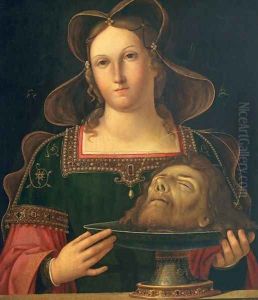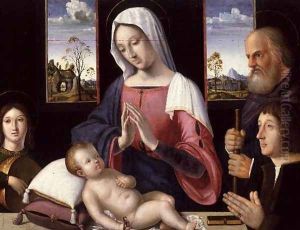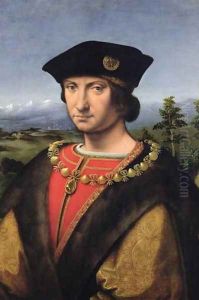Antonio da Solario Paintings
Antonio da Solario, also known as Antonio del Solario or Solario the Younger (to distinguish him from his contemporary, the Milanese painter Giovanni Agostino da Lodi, who was also known as Solario), was an Italian Renaissance painter who is best remembered for his portraits and religious compositions. His exact birthplace is uncertain, but it is believed that he was born around 1460, possibly in Venice or in the Veneto region.
Solario's early life and training are not well-documented, but he is thought to have been influenced by the Venetian school of painting, particularly the works of Giovanni Bellini and Cima da Conegliano. By the early 16th century, Solario had moved to Naples, which was then under Spanish rule. There, he found patronage at the court of King Ferdinand II of Aragon.
In Naples, Solario's style continued to evolve, showing the influence of the Spanish court and the works of other artists active in Naples at that time, such as Pietro Perugino and the Spanish painter Pedro Berruguete. One of his most famous works from this period is the 'Virgin with the Green Cushion,' which showcases his skillful use of color and detailed rendering of textures.
Solario's reputation as a portraitist grew, and he was commissioned to paint several prominent figures of his time. He was particularly adept at capturing the character and status of his sitters through his precise and elegant style. Despite his success as a portraitist, Solario also continued to produce religious works, which were characterized by their devotional intensity and attention to detail.
The exact date of Solario's death is unknown, but it is believed that he died around 1524 in Naples. His works continue to be appreciated for their contribution to the Renaissance style in southern Italy, and they offer valuable insights into the cultural exchanges between Italy and Spain during this period.


